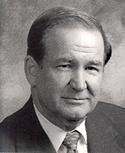Trump vs. Sanders
Barack Obama sought as his legacy to bring an end to the two longest wars in U.S. history. On Oct. 15, he, again, admitted failure.
The 9,800 U.S. troops in Afghanistan will remain another year. And, on Inauguration Day 2017, 5,500 U.S. troops will still be there.
Why cannot we leave? Because, if we do, we risk the re-seizure of power by the Taliban we drove out 14 years ago, and a wipeout of all we have accomplished in America’s longest war.
When can we come home? Never, if we hope to secure that for which we have already paid with 2,500 U.S. dead.
Republican presidential candidates like Lindsey Graham are even talking up sending U.S. ground forces back into Iraq and into Syria.
What we could accomplish there, and when we could get out, are questions that are not only unanswered, they are unasked.
In analyzing the presidential race, the one conclusion upon which all agree is that the anti-Washington, anti-incumbent sentiment is far deeper and wider than most had imagined.
The surge in the polls of Bernie Sanders at the expense of Hillary Clinton, and of Donald Trump at the expense of the GOP establishment, are the political stories of the year.
 And what do Socialist Sanders and Capitalist Trump have in common? Neither is an interventionist — both opposed the Iraq War.
And what do Socialist Sanders and Capitalist Trump have in common? Neither is an interventionist — both opposed the Iraq War.
Trump, unlike Carly Fiorina, would talk to Vladimir Putin. Unlike the departed Scott Walter, he would not tear up the Iran nuclear deal the day he took office. He would monitor and enforce it.
Unlike other Republican candidates, he does not look upon Putin’s intervention on behalf of Assad with anger and outrage. If Putin wants to bomb ISIS, be my guest, says Trump.
Trump has not laid out a broad foreign policy. Yet, the sense one gets is that, like Eisenhower, Nixon and Reagan, he is a “peace through strength” Republican who looks to extricate us from Mideast wars now underway, and not be looking to start any new ones.
For anti-interventionists, Trump vs. Sanders is the ideal race.
Leave a Reply